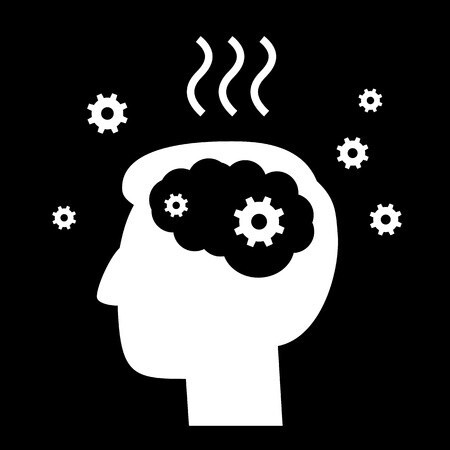 IF EACH OF US had a blooper reel, our most forehead-slapping moments would come at times when we were late, rushing, on deadline, under pressure, times when we were under the influence of stress. That’s when brains take leave of their faculties and default to impulsive decisions that make it appear we have the IQ of a panicked wildebeest.
IF EACH OF US had a blooper reel, our most forehead-slapping moments would come at times when we were late, rushing, on deadline, under pressure, times when we were under the influence of stress. That’s when brains take leave of their faculties and default to impulsive decisions that make it appear we have the IQ of a panicked wildebeest.
Stress reroutes thoughts from the top floors of the brain to the lower ones—to the irrational emotions of the limbic system and to rote mode. We don’t have command of our chief productivity tool, full attention, when focus and the tenuous grasp of working memory are hijacked by the perceived crisis of stress.
RELENTLESS SABOTEUR
When racing on deadline, we send emails with typos, forget attachments, or overlook important calculations and may have to do the task all over again. When late to a flight, we leave smartphone charge cables behind and worry about whether the front door is locked. When stress sets off sudden anger or rage, we may lash out in ways we regret later.
A raft of studies show that stress is a relentless saboteur of attention, and without the ability to manage it, we subvert intellect and devolve to a state as reckless as someone who’s had too much to drink. We do things under its command that we never would with full, unsidetracked presence of mind. That means stress has a major impact on all the things we need attention for: productivity, engagement, and work-life balance.
“Acute stress impairs the intention-based attentional allocation and enhances the stimulus-driven selection, leading to a strong distractibility during attentional information selection,” note the authors of one study (Sanger, Bechtold, Schoof, Blaszkewicz, Wascher).
The stress hormone of cortisol sends us on a chemical bender, a detour away from goals, focus, and the directed concentration of what’s known as “top-down” attention (you choose what you pay attention to) to “bottom-up” attention, a survival mechanism that hijacks the higher brain in moments of perceived threat.
As Daniel Kahneman reported in his sweeping survey of how wrong our brains can be in “Fast and Slow Thinking,” there are two basic cognitive gears. System 1 thinking is a rapid, if not instant, response to a stimulus, and its triggers include the stress response and danger. It’s marked by rash, impulsive, jump-off-the-cliff, knee-jerk familiarity, and mostly speed. There’s no time for weighing pro and con. There’s just an immediate reaction.
STRESS DUMBS US DOWN
System 1 thinking refers decisions to emotions and feeling. This can help extricate you from a life-and-death event in which you would have no time to think your way out, but it’s of little use when trying to make decisions that require thought and reflection. It shreds focus with intrusive thoughts that fan the flames of the perceived crisis of the moment.
The other type of thinking, System 2, is what we use for thoughtful analysis, complex decisions, planning, anything with a goal attached to it. It’s essential for concentration and decision-making, and utilizes the direction and discipline of the higher brain. You are in charge, not an external event.
Subjects in the study above under the command of stress-induced bottom-up attention made a lot of mistakes. Stressed individuals were prone to mis-weighting the information in the tests they participated in and confusing less relevant data with test targets. This is one of the things stress specializes in, causing us to make decisions without considered examination. Errors for the stress group included “a very large portion of response misses, emphasizing a lack of top-down controlled selection bias toward the less salient target feature.”
Stress makes us reach for quick answers, easy fixes, because it forces us to make decisions before we have adequate information to base them upon and ones clouded by raw emotion. It dumbs us down to retaliatory and reflex behavior in which we react before we think. Our job is to build in the thinking before or after the reaction. The key to that is the very thing stress steals: attention.
Attention is the act of choosing from a stream of information and data what you want to pay attention to. It’s a selection process in which your executive attention function in the high brain screens the incoming data and chooses the information that best matches your goal, task, or the tenuous thought associations at top of mind in your working memory. Stress impairs your brain’s ability to stay focused on the task. The release of stress-fueled cortisol impairs intention-based thinking and, suddenly the tail, external stimuli, is wagging the dog.
Minds that can’t stay on task or focus take longer to the get the job done and may have to do the work over again after errors. Obviously, then, the drain of attention has a big impact on productivity. Highly stressed employees don’t just have lower productivity; they also have poor engagement, a survey by Watson Towers found.
Instead of ignoring the siege of devices and interruptions that afflict most offices these days and the stress they aid and abet, we ought to be finding ways to bring stress management tools to every office to combat attention hijackers. The more stress we have, the less attention and productivity. The more attention we have, the less stress. It's simple, but yet impossible to achieve unless stress management strategies can take root.
The solution is more absorption in every moment of every task we do. Studies show that when we have full attention and engagement, we get the job done faster, remember it longer, and like it more.
The same goes for life outside the job. The more we can stay immersed in the moment, the happier we are, our problems emanating from the realm of the other two tenses. Harness attention, and we can tap the power of the most potent motivation, intrinsic goals, doing our work for the inherent interest, and find optimal experience, when our skills meet a challenge.
It all starts with doing things that increase attention--putting limits on device time, participating in activities that build concentration (chess, dancing, learning a language), reading, and strategies such as mindfulness and other forms of target focus that increase the attention center in the prefrontal part of the brain and decrease the self-referential hub, where the thoughts and anxieties of stress live and badger us.
In the era of distraction, you still have the power to direct your mind and reduce stress and increase productivity by boosting top-down attention and reducing bottom-up attention. That's if you can regulate the impulsivity of System 1 and let System 2 take back your mind from the attention-stealers.
If you would like to increase attention and productivity on your team or in your company, please click on the button below for details on our stress management, productivity, and work-life balance programs.









